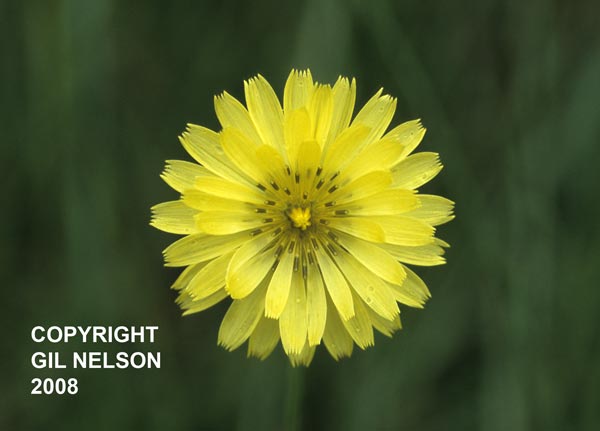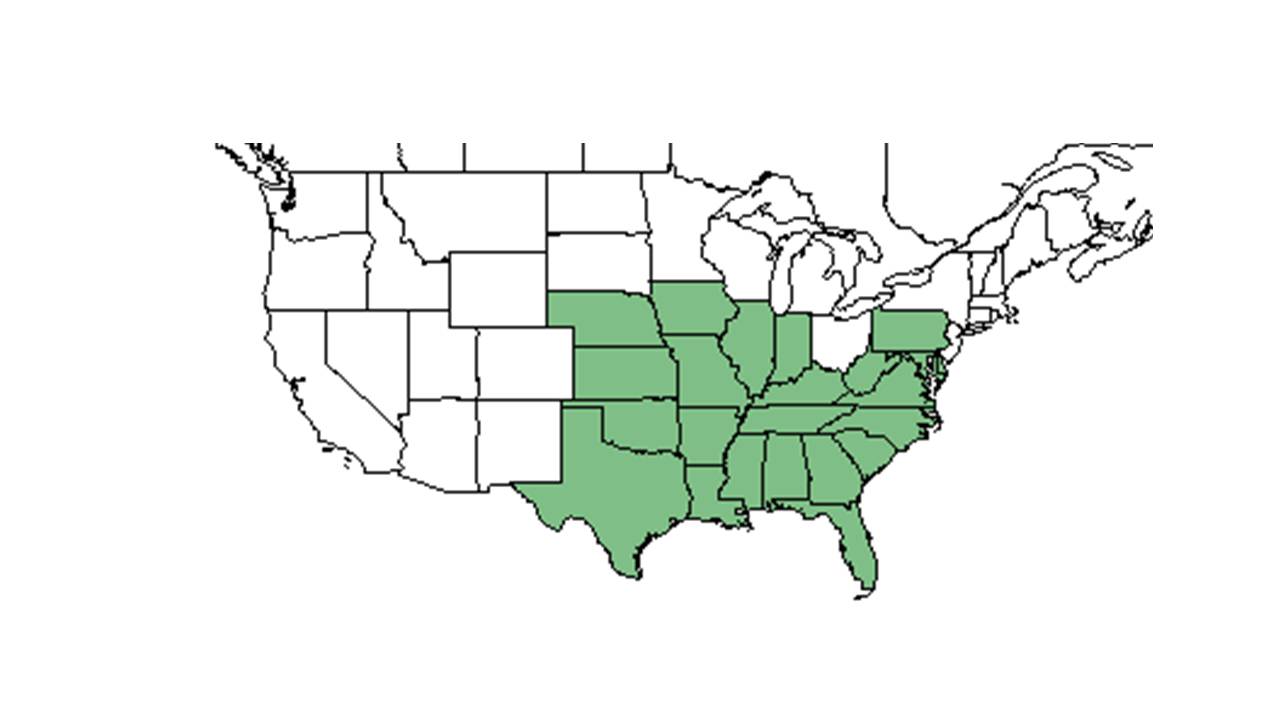Difference between revisions of "Pyrrhopappus carolinianus"
(→Description) |
KatieMccoy (talk | contribs) |
||
| Line 19: | Line 19: | ||
Common name: Carolina desert-chicory | Common name: Carolina desert-chicory | ||
| + | ==Taxonomic notes== | ||
==Description== | ==Description== | ||
<!-- Basic life history facts such as annual/perrenial, monoecious/dioecious, root morphology, seed type, etc. --> | <!-- Basic life history facts such as annual/perrenial, monoecious/dioecious, root morphology, seed type, etc. --> | ||
| Line 28: | Line 29: | ||
==Ecology== | ==Ecology== | ||
===Habitat=== <!--Natural communities, human disturbed habitats, topography, hydrology, soils, light, fire regime requirements for removal of competition, etc.--> | ===Habitat=== <!--Natural communities, human disturbed habitats, topography, hydrology, soils, light, fire regime requirements for removal of competition, etc.--> | ||
| + | In the Coastal Plains in Florida and Georgia, ''P. carolinianus'' can be found in sandy old fields, in sandpine-oak woodlands, moist banks bordering marshes, frequently burned mature longleaf pine-wiregrass community, and annually burned savannas (FSU Herbarium). It can also be found in ditches, in dry sands along parking lots, sandy vacant lots, open fields by rivers, moist bottomland pastures, along roadsides, drying sand on upper beach, trails of coastal hammocks, clearings near buildings, shores of recently made ponds, along highways, lawns, old biocontrol plots, mowed areas, fire lanes, and an access path through sandhill to a limestone trail. Associated species include ''Lantana, Pinus palustris, Aristida stricta, Bumelia, Crataegus'', and ''Cenchrus'' (FSU Herbarium). | ||
| + | |||
| + | Soil types observed include sand, sandy loam, sandy peat soil, and loam soils (FSU Herbarium). | ||
| + | |||
===Phenology=== <!--Timing off flowering, fruiting, seed dispersal, and environmental triggers. Cite PanFlora website if appropriate: http://www.gilnelson.com/PanFlora/ --> | ===Phenology=== <!--Timing off flowering, fruiting, seed dispersal, and environmental triggers. Cite PanFlora website if appropriate: http://www.gilnelson.com/PanFlora/ --> | ||
Blooms from July to November (Nelson 2005). | Blooms from July to November (Nelson 2005). | ||
Revision as of 12:43, 5 October 2015
| Pyrrhopappus carolinianus | |
|---|---|

| |
| Photo taken by Gil Nelson | |
| Scientific classification | |
| Kingdom: | Plantae |
| Division: | Magnoliophyta – Flowering plants |
| Class: | Magnoliopsida – Dicotyledons |
| Order: | Asterales |
| Family: | Asteraceae ⁄ Compositae |
| Genus: | Pyrrhopappus |
| Species: | P. carolinianus |
| Binomial name | |
| Pyrrhopappus carolinianus (Walter) DC. | |

| |
| Natural range of Pyrrhopappus carolinianus from USDA NRCS Plants Database. | |
Common name: Carolina desert-chicory
Contents
Taxonomic notes
Description
A description of Pyrrhopappus carolinianus is provided in The Flora of North America.
Distribution
It is found on roadsides, dry fields, disturbed sites, and bottomlands. P. carolinianus is a native plant with weedy tendencies (Nelson 2005).
Ecology
Habitat
In the Coastal Plains in Florida and Georgia, P. carolinianus can be found in sandy old fields, in sandpine-oak woodlands, moist banks bordering marshes, frequently burned mature longleaf pine-wiregrass community, and annually burned savannas (FSU Herbarium). It can also be found in ditches, in dry sands along parking lots, sandy vacant lots, open fields by rivers, moist bottomland pastures, along roadsides, drying sand on upper beach, trails of coastal hammocks, clearings near buildings, shores of recently made ponds, along highways, lawns, old biocontrol plots, mowed areas, fire lanes, and an access path through sandhill to a limestone trail. Associated species include Lantana, Pinus palustris, Aristida stricta, Bumelia, Crataegus, and Cenchrus (FSU Herbarium).
Soil types observed include sand, sandy loam, sandy peat soil, and loam soils (FSU Herbarium).
Phenology
Blooms from July to November (Nelson 2005).
Seed dispersal
Seed bank and germination
Fire ecology
Pollination
Use by animals
Diseases and parasites
Conservation and Management
Cultivation and restoration
Photo Gallery
References and notes
Nelson, Gil. East Gulf Coastal Plain. a Field Guide to the Wildflowers of the East Gulf Coastal Plain, including Southwest Georgia, Northwest Florida, Southern Alabama, Southern Mississippi, and Parts of Southeastern Louisiana. Guilford, CT: Falcon, 2005. 173. Print.